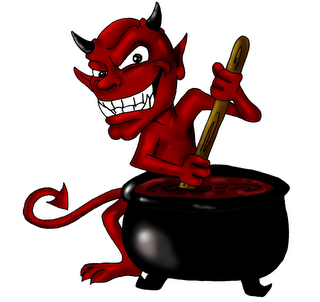Now, there are
many folks out there who will say that I’m making a big deal out of
nothing. As Catholics, however, we
should know better: we of all people should understand the power of images. As
I explain in an earlier post [here]:
This is something the Church has
always understood: why else the great art, stained glass windows, cathedrals
and Gregorian chant, the whole “smells and bells” routine? Why else the traditional condemnation of
“impure” images, and the stern warnings to steer clear of their dangers?
I go on to point out that current brain research that shows
that images have a profound, often unconscious, impact on the psyche.
In the case of
mascots the connection is explicit. They are the modern-day descendants of the
ancient tribal totems, which were believed to confer their most prominent
qualities (e.g., the bear’s strength, the wolf’s ferocity, etc.) on the people
that had adopted them. While we no
longer attribute numinous powers to them, groups still choose mascots (today
mascots are often people as well as animals) because they represent certain
desirable qualities that that the group would like to associate with
themselves, and that they would like their members to emulate. For example, American Indians have long been
a popular mascot for athletic teams in the United States because of their
reputation as brave and tenacious warriors.
Images and logos
on clothing serve a similar function for individuals: they depict things and
ideas with which we want to associate ourselves, such as admired athletic teams
and players, schools which we have attended, maybe a political message of some
kind or some other symbol of personal importance (marijuana leaves are popular
among a certain set). The point is that we
wear images on our person to tell the world something about us (and, usually,
to tell ourselves something about ourselves).
It was for this
reason that my lovely bride was somewhat dismayed the other day when she went
online to look for t-shirts for our children.
She visited the site of a well-known retailer that she had often used
before, but found that this time a wide array of children’s clothing was
adorned with skulls and similarly macabre images. Now, I know that such images have been around
for a long time, although usually only among a very narrow segment of the
population; today they are becoming ever more pervasive, and less and less
remarkable. What does it say about our
culture that we seem to think nothing of decorating our children, even little
girls, with images of death and corruption?
What qualities are we holding up for emulation to these young people who
are still forming their sense of self?
This is the bottom line: if we surround ourselves with ugliness and grotesquerie, we shouldn't be surprised to find our world growing more ugly and grotesque; if we dress our children that way, why should we expect them to aspire to beauty and nobility? That's no way to evangelize the world. We need to say "no!" to the Culture of Death, even in a matter as "trivial" as a Jolly Roger t-shirt (don't they always say "the Devil is in the details"?). St. Paul tells us:
Finally, brethren, what is true, whatever is honorable, whatever is just, whatever is pure, whatever is lovely, whatever is gracious, if there is any excellence, if there is anything worthy of praise, think about these things. (Philippians 4:8)
Not only is that Holy Scripture, it's plain common sense.
Not only is that Holy Scripture, it's plain common sense.



No comments:
Post a Comment